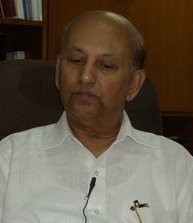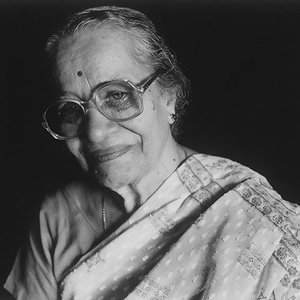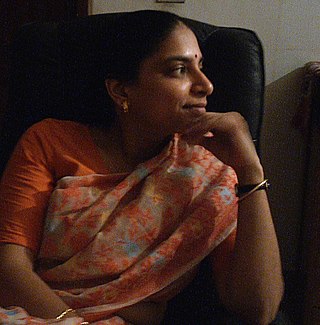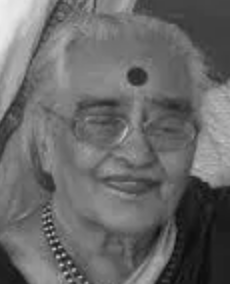
Gopalasamudram Narayanan Ramachandran, or G.N. Ramachandran, FSR was an Indian physicist who was known for his work that led to his creation of the Ramachandran plot for understanding peptide structure. He was the first to propose a triple-helical model for the structure of collagen. He subsequently went on to make other major contributions in biology and physics.

Udupi Ramachandra Rao was an Indian space scientist and former chairman of the Indian Space Research Organisation. He was also the Chairman of the Governing Council of the Physical Research Laboratory at Ahmedabad and Nehru Planetarium at Bengaluru and chancellor of the Indian Institute for Space Science and Technology (IIST) at Thiruvananthapuram. He is known as "The Satellite Man of India". He pioneered India's first satellite launch Aryabhata in 1975.

The Indian Institute of Astrophysics (IIA), with its headquarters in Bengaluru, is an autonomous research institute wholly funded by the Department of Science and Technology, Government of India. IIA conducts research primarily in the areas of astronomy, astrophysics and related fields.

The Indian Academy of Sciences, Bangalore was founded by Indian Physicist and Nobel Laureate C. V. Raman, and was registered as a society on 27 April 1934. Inaugurated on 31 July 1934, it began with 65 founding fellows. The first general meeting of Fellows, held on the same day, elected Raman as president, and adopted the constitution of the Academy.

Padma Tiruponithura Venkatraman, also known as T. V. Padma, is an Indian-American author and scientist.
Sharada SrinivasanFRAS FAAAS is an archaeologist specializing in the scientific study of art, archaeology, archaeometallurgy and culture. She is a Professor at the National Institute of Advanced Studies, Bangalore, India, and an Honorary University Fellow at the University of Exeter, UK. Srinivasan is also an exponent of classical Bharatanatyam dance. She was awarded India's fourth highest civilian award the Padma Shri in 2019. She is a member of the Calamur family.

Manchanahalli Rangaswamy Satyanarayana Rao was an Indian scientist. He was awarded the fourth-highest civilian award, the Padma Shri, for Science and Engineering in 2010. From 2003 to 2013 he was president of Jawaharlal Nehru Centre for Advanced Scientific Research (JNCASR) in Bangalore, India.

Kamal Jayasing Ranadive was an Indian biomedical researcher known for her research on the links between cancers and viruses. She was a founding member of the Indian Women Scientists' Association (IWSA).
Indira Nath was an Indian immunologist. Her major contribution in medical science deals with mechanisms underlying immune unresponsiveness in man, reactions and nerve damage in leprosy and a search for markers for viability of the Leprosy bacillus. Prof. Nath's fields of specialisations are Immunology, Pathology, Medical biotechnology, and communicable diseases.

Charusita Chakravarty was an Indian academic and scientist. She was a professor of chemistry at the Indian Institute of Technology, Delhi since 1999. In 2009 she was conferred Shanti Swarup Bhatnagar Prize for Science and Technology in the field of chemical science. In 1999, she received B.M. Birla Science Award. She was an Associate Member of the Centre for Computational Material Science, Jawaharlal Nehru Centre for Advanced Scientific Research, Bangalore.
Bimla Buti was an Indian physicist who specialized in the field of plasma physics. She was the first Indian woman Physicist Fellow of Indian National Science Academy(INSA). In 1994, she was awarded INSA-Vainu Bappu Award.
Vinod Krishan, is an Indian physicist, a Senior Professor and dean of sciences at the Indian Institute of Astrophysics, Bangalore. She is involved in teaching and research in Plasma Physics. She is a Fellow of the National Academy of Sciences, India and the 1991 recipient of the Vikram Sarabhai Award for Space Sciences.
Prabha R. Chatterji is an Indian scientist at John F. Welch Technology Centre, Bangalore, India.
Qudsia Tahseen is a Professor of Zoology at Aligarh Muslim University and teaches Animal Ecology as well as Nematology to the students of the Masters programme. Her areas of research include taxonomy and developmental biology of terrestrial and aquatic nematodes. Her thrust areas are Biodiversity, Taxonomy, Ecology and developmental biology of soil and fresh water nematodes. She is a fellow of two national science academies of India.

Rohini Godbole was an Indian physicist and academic specializing in elementary particle physics: field theory and phenomenology. She was professor at the Centre for High Energy Physics, Indian Institute of Science, Bangalore. She worked extensively on different aspects of particle phenomenology over three decades, in particular on exploring different aspects of the Standard Model of Particle Physics (SM) and the physics beyond it (BSM). Her work regarding hadronic structure of high-energy photons outlined a variety of ways in which to study it and has had implications for the design of next generation electron positron colliders. She was an elected fellow of all the three academies of Science of India and also the Science Academy of the Developing World (TWAS).
Saraswathi Vishveshwara is an Indian biophysicist with specialization in the area of Molecular Biophysics. She is a professor in the Molecular Biophysics Unit at the Indian Institute of Science, Bangalore. She works on computational biology and her research is primarily focused on elucidating structure-function relationships in biological systems. Using computational-mathematical techniques to understand the functioning of macromolecules such as proteins is a key aspect of her research.
Gaiti Hasan is an Indian scientist who researches in the fields of molecular biology, genetics, neuroscience and cell signalling. Hasan is a Fellow of the Indian National Science Academy (INSA), the apex body of Indian scientists and technologists. From 2013 onwards she has been serving as a Senior Professor at the National Centre for Biological Sciences (NCBS), Bangalore.
Joyanti Chutia is an Indian physicist who specializes in solid-state physics and plasma physics. She was among the first women who have headed scientific institutions in India when she became the Director of the Institute of Advanced Study in Science and Technology in Guwahati, Assam, which is the first major research institution in North East India. She is a fellow of National Academy of Sciences. She is an Emeritus Scientist at the Department of Science & Technology in the Government of India.
N. Srinivasa Iyer Ramaswamy (1926–2012), popularly known as Cartman Ramaswamy, was an Indian engineer, educationist, management academic and writer, and the founder director of the Indian Institute of Management, Bangalore. He was the founder of Centre for Action, Research and Technology for Man, Animal and Nature (CARTMAN), a non governmental organization working for region-relevant and appropriate technology transfer to rural areas and Indian Heritage Academy, an organization involved in propagating Indian cultural traditions. He was also the founder chairman of the Adarsh Vidya Kendra (AVK) Group of educational institutions. The Government of India awarded him the third highest civilian honour of the Padma Bhushan, in 2006, for his contributions to society.

Satyavati Motiram Sirsat was an Indian cancer researcher.










